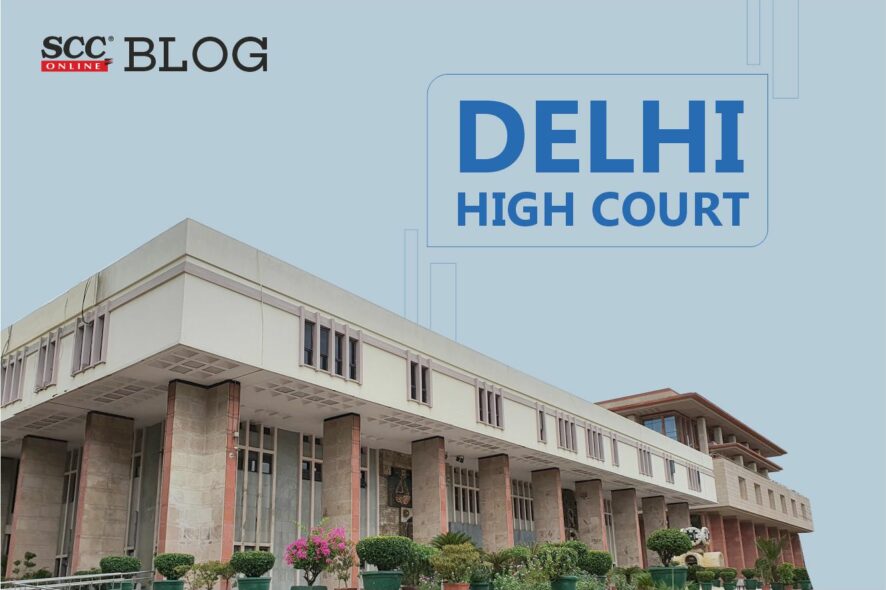Delhi High Court: In an appeal filed by the accused challenging the order of conviction passed by the Trial Court for offences punishable under Section 302 IPC, Sections 25(1B)(a) and 27(1) Arms Act, 1959, Anish Dayal, J. upheld the order of conviction and sentence as that the guilt of the appellant for the murder of the deceased has been proved beyond reasonable doubt and duly supported by circumstantial evidence by the prosecution.
The Trial Court sentenced the accused to life imprisonment for an offence punishable under Section 302 Penal Code, 1860 along with fine of Rs. 2000/-, rigorous imprisonment for one year for offence under Section 25(1B)(a) Arms Act and fine of Rs. 1000/-, rigorous imprisonment for 3 years for offence under Section 27(1) Arms Act and fine of Rs. 1000/-, additional rigorous imprisonment for 3 months in default of payment of fine.
The Court noted that the death of the deceased was clearly homicidal in nature caused due to firearm injury, as evident from the testimony of the doctor who conducted the postmortem. There were no direct eyewitnesses at the point of shooting the deceased, however, the res gestae evidence of PW-5 and PW-9 was consistent as they both heard a sound of a fire shot, girl standing on the ramp where she was shot and the boy hiding something under his shirt possibly the pistol as corroborated by other witness.
The Court further noted that the motive of the appellant for killing the deceased is also quite evident from the testimonies that the father of the deceased along with two others had beaten up the accused few years back as he was seen stalking and eve teasing the deceased. Moreover, on perusal of chain of facts and circumstance and as the accused absconded immediately after the incident of murder would be admissible as “relevant conduct” under Section 8 of Evidence Act, 1872.
The Court observed that the ballistic opinion clearly showed that the bullet lodged in the body of the deceased had been fired from that weapon as also it corresponded to the empty cartridge found in the recovered weapon which was found hiding in the attic of his room wrapped in a newspaper.
Placing reliance on Mohd. Inayatullah v. State of Maharashtra, (1976) 1 SCC 828, State of Maharashtra v. Damu, (2000) 6 SCC 269 and Bodhraj v. State of J&K, (2002) 8 SCC 45, the Court opined that while a mental fact disclosed by an accused in custody may not be admissible, disclosure leading to the recovery of a physical object or confirmation of a physical fact offers an admissible confirmation to the prosecution.
Thus, the Court concluded that culling out the essential ingredients of Section 27 of Evidence Act, 1872 in consonance with the principles articulated by the Supreme Court, the following aspects would need to be considered and factored in, while applying the doctrine of confirmation by subsequent events, embodied in section 27:
i) There must be “information” received from an accused.
ii) The accused must be in the custody of a police officer when such “information” is given.
iii) The said “information” was not within the knowledge of the police officer, when it was received from the accused.
iv) As a consequence of that “information”, a “fact” is discovered.
v) Only that part of the “information” which is the direct and immediate cause of discovery of the “fact” and is distinctly related to it, stands confirmed for the purposes of the prosecution.
vi) If the prosecution deposes to the “fact” based on that part of the “information” (as in (v) above), it will stand proved.
Applying the principles to the facts of this case, it would be evident that pursuant to the disclosure by the appellant, in custody, an information was received that first, the appellant committed the offence; second, the appellant ran to the house of Sheikh@Shekhu; third, the house of Sheikh@Shekhu is at Babu Park, Kotla Mubrak Pur; fourth, the appellant had given the country made pistol with a cover to Sheikh@Shekhu to keep/hide.
The Court noted that the first two pieces of information are not facts which can be “discovered” but are either confessional/inculpatory or un-discoverable facts. But the latter two pieces of information lead to two facts which are discovered i.e., that Sheikh@Shekhu lives in that address, he had a country made pistol in his possession and that the pistol was hidden in the attic in his house. Both these factual discoveries, not known to the police, are therefore probative and offer confirmation of the information given by the appellant, to that extent. This confirmation offers the prosecution case an important hook and clasp in the chain of circumstantial evidence, thus leading finally to proving guilt of the appellant beyond reasonable doubt.
The Court held the guilt of the appellant for the murder of the deceased has been proved beyond reasonable doubt and duly supported by circumstantial evidence by the prosecution.
[Vijay Saini v. State, 2022 SCC OnLine Del 3563, decided on 31-10-2022]
Advocates who appeared in this case:
Mr. Sumeet Verma, Advocate with Mr. Mahinder Pratap Singh, Advocate for the Appellant;
Ms. Shubhi Gupta, APP for the State.
*Arunima Bose, Editorial Assistant has put this report together.







